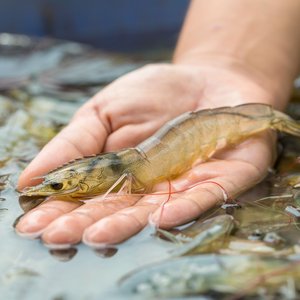An estimated 5,000 previously unknown ocean fish species and hundreds of thousands of other marine life forms are yet to be discovered, according to scientists engaged in a massive global scientific collaboration to identify and catalog life in the oceans.
The new marine fish species, being identified at an average rate of 160 per year (roughly three new species per week since year 2000), are being catalogued and mapped by the Census of Marine Life (CoML), an unprecedented cooperative initiative involving leading marine scientists from every world region. The Census issued its first report after three years of work Oct. 23 at the Smithsonian Institution, Washington D.C. More than 300 scientists from 53 countries are at work on the Census, designed to assess the diversity, distribution and abundance of ocean life and explain how it changes over time. The scientists, their institutions and government agencies are pooling their findings to create a comprehensive and authoritative portrait of life in the oceans today, yesterday and tomorrow.
Over 15,300 species of marine fish are now included in the Census database with another 2,000 – 3,000 expected by the time of the final Census report in 2010. CoML experts expect the final count of marine fish species to total roughly 20,000. An average of 1,700 other animals and numerous marine plants are also being catalogued each year. CoML scientists estimate that 210,000 marine life forms of all types are currently known to science, but the final in existence could be up to 10 times that number.
The first Census report – The Unknown Ocean: Baseline Report for the Census of Marine Life – reviews the state of knowledge of ocean biodiversity and how it has advanced during the first three years of the ambitious 10-year, $1 billion Census initiative. Following the report’s launch, leading scientists involved in the project will meet to map out research priorities for the next seven years, one of the most important meetings of ocean researchers ever conducted.
On a practical level, the Census identifies threatened species and important breeding areas, helping fisheries authorities develop effective strategies for the sustainable management of marine resources. New pharmaceuticals and industrial compounds are among the potential bio-prospecting spin-offs of the thousands of new species being found. Other benefits include identification of "watering holes" or "oases" and "nurseries" in the open and deep oceans that merit protection. As well, the Census is helping develop and test new technologies that will permit exploration of areas unreachable today, vastly improving human understanding of ocean life.
By cataloging and monitoring changes in size distribution and composition of marine life, the Census will help predict ocean life in the future. Scientists also believe that as they reveal the secrets of Earth’s last largely unexplored frontier, they will expand understanding of elemental processes such as climate, evolution, extinction and migration.
“This is the start of the first great voyage of discovery of the 21st Century,” said J. Frederick Grassle of Rutgers University, Chair of the CoML Scientific Committee. “More importantly, it begins the first systematic global effort to measure our oceans’ vital signs, and guide what must be done to reverse their decline.”
Details of the project are available on an extensive portal for the project at: http://www.coml.org/coml.htm










